Why Japanese Women are Slim and Look Young? The Secrets of Japanese Diet
Have you ever wondered how Japanese women manage to stay slim and look young for a long time? Do you know the Japanese diet can naturally help you keep your weight off and maintain a youthful look?
I’m Japanese, and I’ve always followed the typical Japanese diet and eating habits throughout my life. Now 38, my friends and colleagues kindly compliment how young I look and don’t seem to age (I DO feel fearful at times of getting old, however!).
You can see below how I’ve been ageing.
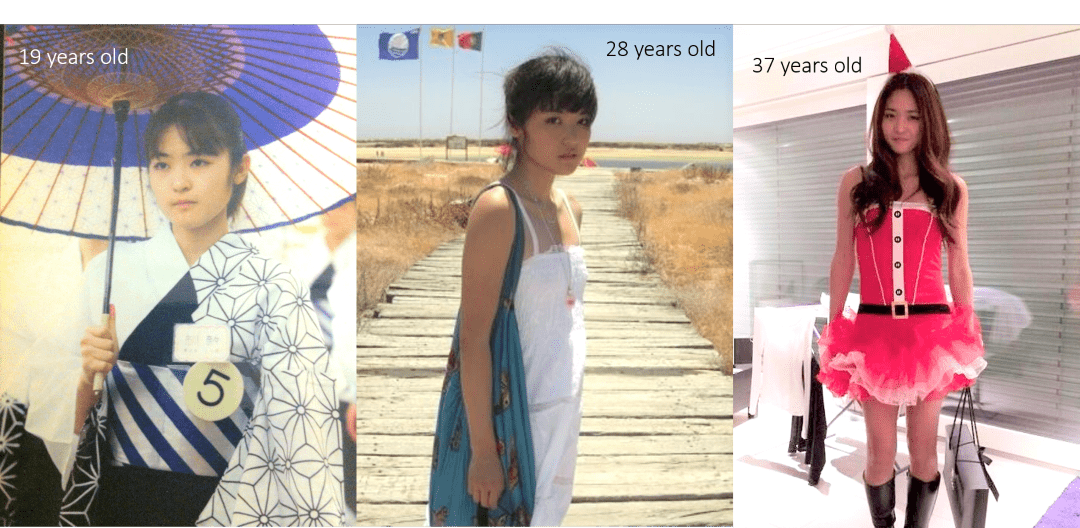
I often get asked “WHAT’S THE SECRET??
My answer is always my diet.
Without a shadow of a doubt, I say this because I can clearly see how different my eating habits are from my Western friends after having lived in Europe over the last 15 years.
Thanks to the Japanese diet and typical eating habits, I maintain the same weight as when I was 15, and my skin naturally glows still to this day.
In this post, I’m going to share the secrets of the Japanese diet and the typical eating habits the Japanese swear by. Anyone from young and old can benefit from the Japanese diet if you want to be healthy and maintain youth (who doesn’t? 🙂 )
Don’t worry if you’ve never tried the Japanese diet – it can be a few small things you need to add, change or stop. It will be easy to follow and keep your new habits! Ready?
Let’s discover the secrets of the Japanese diet for your long-lasting youth!
The Secrets of the Japanese Diet for Your Health & Beauty
What is the Typical Japanese Diet?
The traditional Japanese diet is called Washoku (和食) and UNESCO recognised the beauty of the cuisine in 2013. It has been known as one of the healthiest in the world.
Japanese cuisine is in most people’s mind associated with sushi, but this is a total myth.
It has an expansive repertoire of traditional dishes FAR BEYOND raw fish. There is a huge emphasis on harmony and the passing of the seasons.
It is an art in and of itself and typically consists of separate small bowls of rice, miso soup and pickles alongside main dishes.
It is important to understand the principle before going into types of foods because everything is prepared to follow the principle.
Let’s take a look!
[Principle]
The Japanese diet revolves around the principle called “Ichiju-Sansai” (一汁三菜).
Ichiju means 1 soup, Sansai is 3 types of dishes.
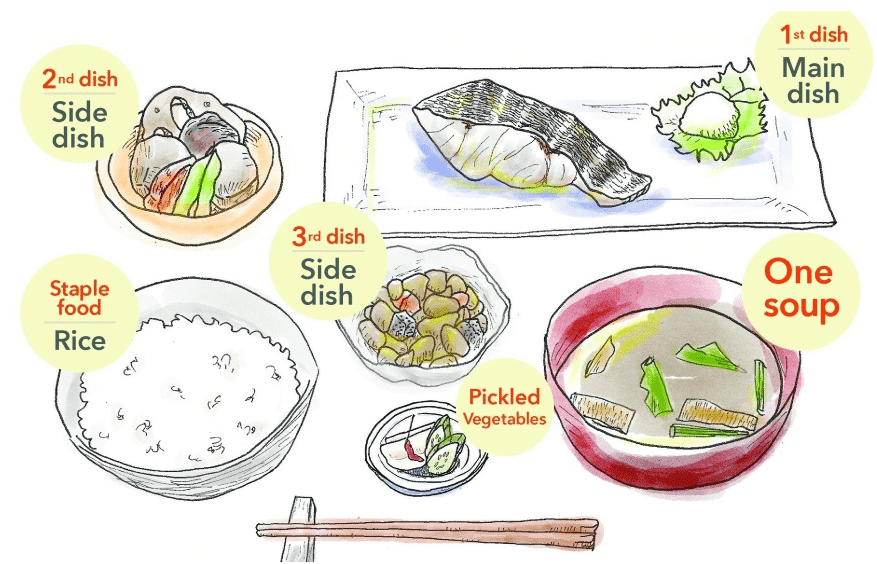
source: https://allabout-japan.com/en/
Japanese people prepare food with this principle 1 soup (mostly miso soup) and 3 types of dishes in mind.
For the 3 dishes, you have 1 main (proteins such as fish or meat) and 2 very small dishes (vegetables). The two small dishes are seen as complementary to the main dish, and it’s like side dishes, but they add the missing nutrition to the whole meal, so it’s well balanced.
Below is a good example of a typical Japanese meal. It’s from my favourite Japanese actress and she made it all herself!
When you think of this principle, it is also important to include different cooking methods in the 3 dishes.
What I mean by that is, for example, you have a grilled fish as your main dish. In that case, your side dishes should be cooked in other methods like steamed, sautéed, pickled, or simmered in broth.
Also, as a whole, there should be no overlapping in the ingredients you are using in all the dishes.
[Foods]
The traditional Japanese diet consists of an abundance of seafood, vegetables, and soya beans based foods (tofu, natto, edamame, etc.). It’s got only a little amount of meat and dairy products.
The Japanese staple foods – rice and noodles are eaten in small portions.
The Japanese cuisine has a huge variety of dishes thanks to geography and its indigenous nature.
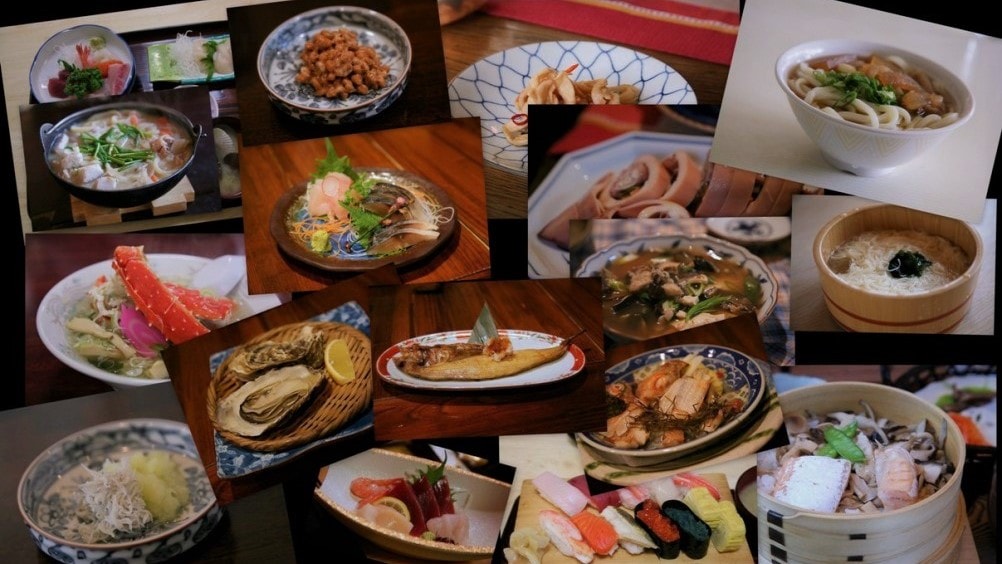
Japan stretches from VERY far from north to south (pic below), and it would easily take over 6 hours by flight to go from the very north to southernmost Japan.
So you can imagine how different foods can be depending on where in Japan.
The climate of southernmost Japan (Okinawa islands 🌴 – my home & 3-hour flight from Tokyo) is exactly like Florida or Portugal. It never snows, is subtropical and you can swim from April to November (average temperature 25°C+ / 77°F+)
Whereas in northernmost Japan (Hokkaido ❄️), it’s cold and exactly like Alaska, Scandinavia or Siberia! The max temperature averages around -7°C / -19°F in winter (min -20°C/-4°F) and it’s just snow snow snow. Even in summer, it hardly goes above 20°C/60°F, and it only lasts 2 month top.

Also, seasonality is key. Japanese people have long respected and embraced what nature brings every season to their diet. It is ingrained in the culture to eat what’s in season, especially fish.
We even have a fish seasonality calendar like this below!

[Seasonings]
What is very distinct about Japanese cuisine is the seasonings. You would NOT find a similar or the same type of flavouring anywhere else.
The principle of the Japanese diet is to enhance the natural flavours of the ingredients. We say bring the very best out of the foods called Umami.
Seasonings are there to help bring the best of foods, and you mainly use a combination of soy sauce, miso, mirin, dashi (fish stocks), kombu (seaweed), and sake like below.
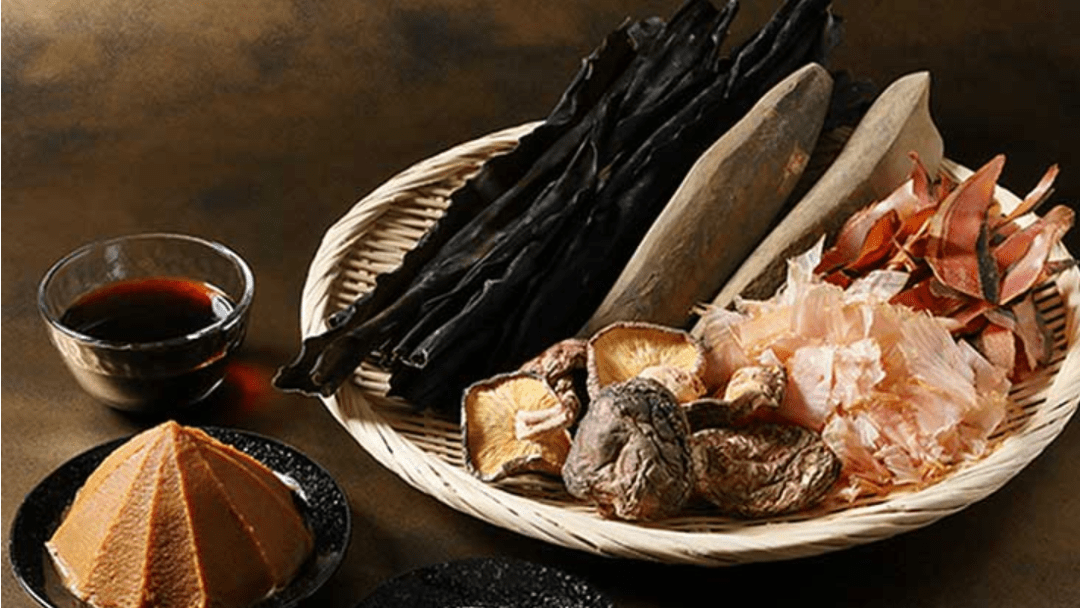
Overall, it is VERY low in sugar and fat.
Instead, you use health (and beauty) promoting seasonings like miso, mirin and dashi. I will get into the benefits in detail in the next section.
You would NOT find sugary foods or heavily sauced dishes in the Japanese diet. This is already helping people to live healthily and long.
[Cooking Methods]
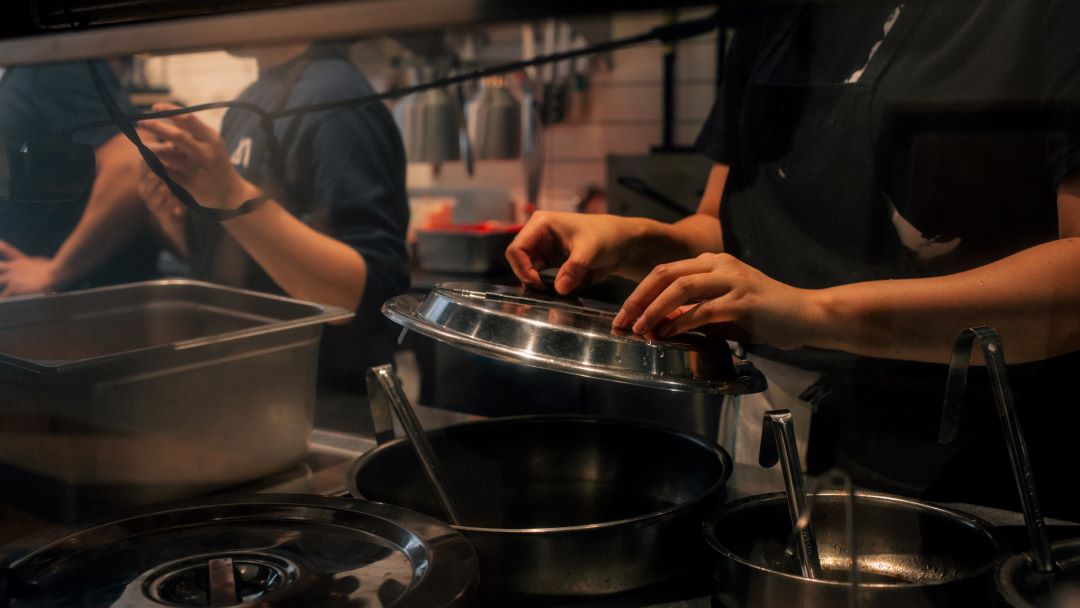
This is another reason why Japanese people are slim. It is mainly without oil.
There are 4 main cooking methods in Japanese cooking.
- Simmer
- Steam
- Stew
- Grill
Frying is occasional, and any dish that involves frying is only done a few times a month in most Japanese families. So tempura is actually not something you eat as everyday food in Japan.
It is vastly different from Chinese, as Chinese cooking involves a lot of frying. It can be quite oily and leaves you with a heavy feeling in the stomach.
You don’t really have to worry about oiliness with Japanese food since the cooking methods hardly involves oil! So, it’s another reason why it’s healthy 🙂
[Green Tea]
The Japanese diet cannot be complete without tea. Japanese people drink up to 28 types of green tea. If you are Japanese, you grow up with tea.
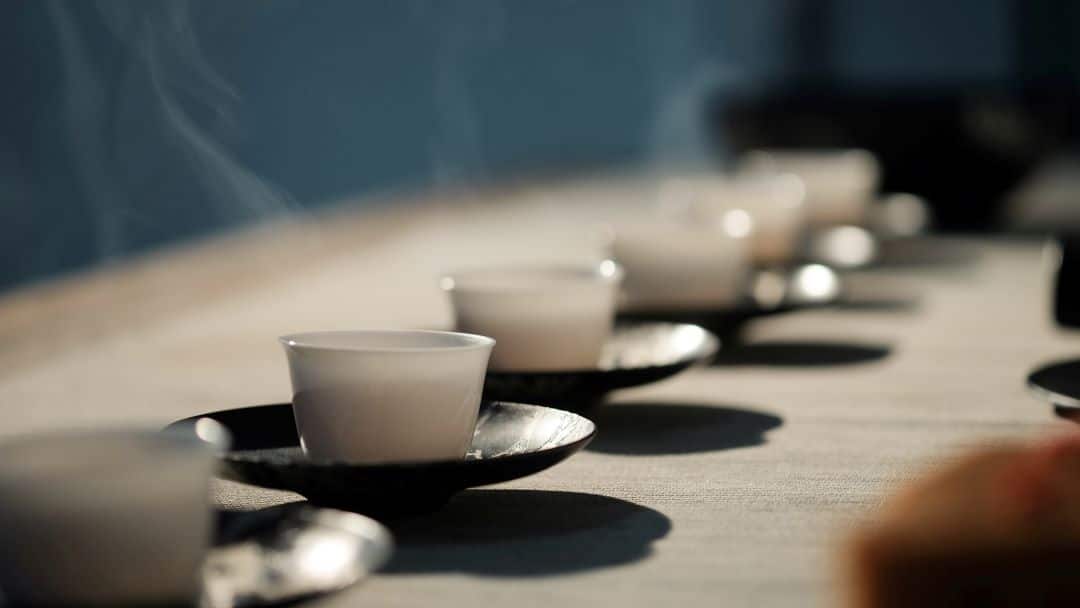
It is rare to consume soft drinks, and people naturally prefer drinking water or tea with a meal or after a meal. Between meals, most people like to drink a type of green tea or simply water.
Most importantly, no sugar added to tea in Japan as a rule. In a typical Japanese family, you will not see anyone adding sugar to their green tea.
In terms of all other drinks, it’s almost devoid of artificial flavourings and sugar, which obviously helps you to stay healthy and promote long life.
The Benefits of the Japanese Diet (Health & Beauty)
By now, you may have some idea why the Japanese diet is healthy, but I’m going to go more in detail of the benefits here, so you can be sure 🙂
You will discover how much the Japanese diet is full of health-promoting and anti-ageing ingredients!
I go over by category again like the previous section. Food, seasonings, teas.
[Food]
In this section, I’m going to focus on the two most characteristic foods of Japanese cuisine. Fish and soybean foods.
Most Japanese people eat them pretty much every single day and that’s literally throughout their entire life!
Fish
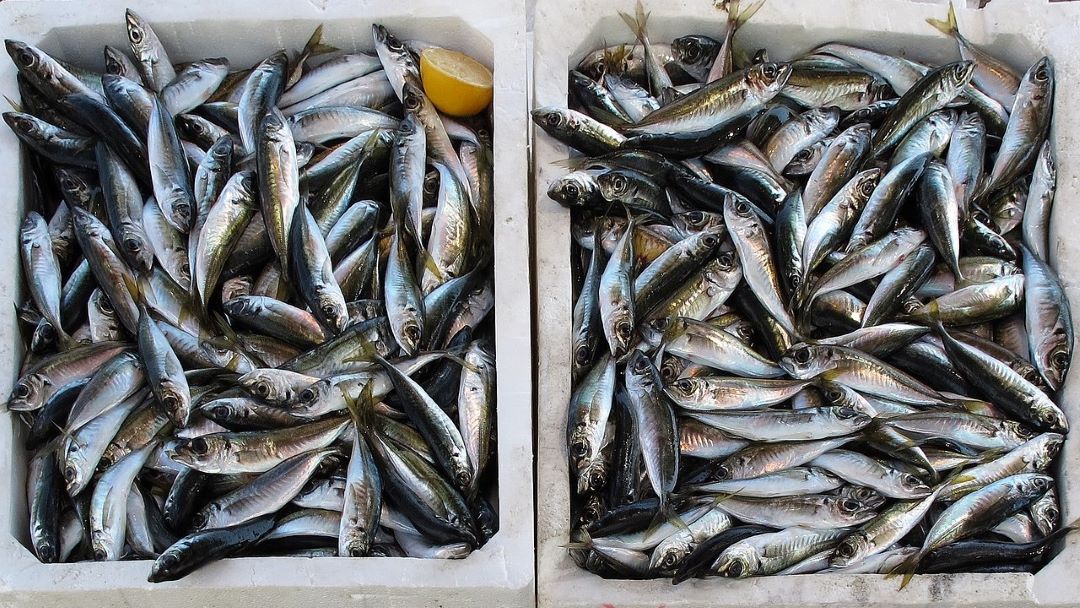
A jewel of wellness, very rich in health and beauty supporting nutrients such as:
Proteins
- Helps eliminate excess sodium from the body (excess sodium can lead to high blood pressure)
DHA
- Plays a vital role in developing brain
- Help improve memory and learning abilities
- May also help prevent dementia
EPA
- Helps reduce cholesterol and fat
- Improve blood flow
Calcium
- Helps to strengthen teeth and bones. (Lack of calcium can make teeth and bones brittle and the immune system weak. It also can cause irritability.)
Taurine
- Helps to combat fatigue and cleanse blood vessels. (Taurine is present in our eyes, and lack of it can lead to eye problems. So taking taurine helps your eyes to improve.)
- Helps promote brain development of babies.
*Side note – cats 🐈 can see very well in the dark is because they eat so much fish (taurine) so they have super eyesight!
Vitamins (A, B’s, D, E)
- Vitamins are vital to beautiful skin.
- Helps prevent cancer and heart diseases.
(My story)
I remember my mum always said:
If you want to be smart, you need to eat lots of fish. If you want a healthy body and beautiful hair, you need to eat more fish. Eat more fish!!!
I was then eating fish like hell when I was little as a result and still the same lol. I really love fish and cannot live without fish 💕
[Soybean Foods]
Soybeans are a staple ingredient of the Japanese diet.
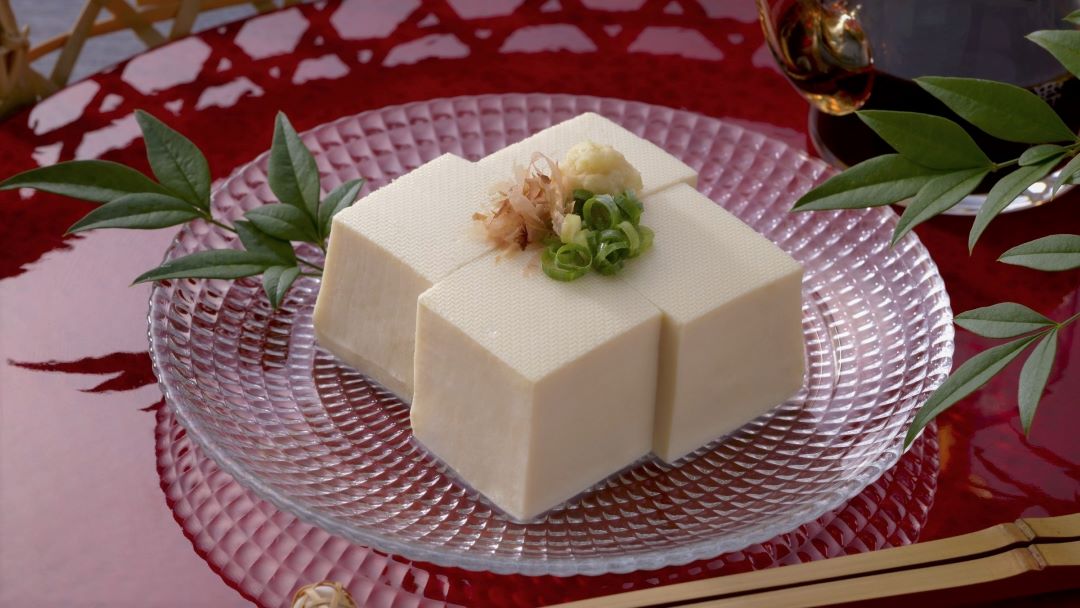
Traditional Japanese cuisine has soy in almost every meal, hiding in places you wouldn’t expect! It’s in soy sauce, it’s in miso, and it’s tofu, natto and edamame.
Most Japanese people know the health benefits of soybean foods and people eat them regularly.
It’s known as an anti-ageing food in Japan.
- Prevents breast cancer
- Promotes slow-ageing
- Lowers cholesterol
- Strengthen bones and joints
- Helps control weight
Indeed, soybeans have many health and beauty nutrients like vitamins, calcium, iron, magnesium, zinc etc. They are particularly high in vitamins and minerals and contain no cholesterol. It also provides more fibre than green vegetables.
It really is a superfood, and you should try to enjoy the beauty benefits too 😉
[Seasonings]
What distinguishes the Japanese diet is the seasonings.
As mentioned earlier, miso, mirin, dashi, soy sauce and sake are used in most dishes. Not necessarily all of them at the same time, but you will create a flavour by combining a few of them.
In the traditional Japanese diet, you don’t use butter, margarine, mayonnaise, ketchup, brown sauce, mustard etc. and use very little sugar.
The Japanese condiments contribute to good health and beautiful skin as much as the ingredients themselves.
Miso
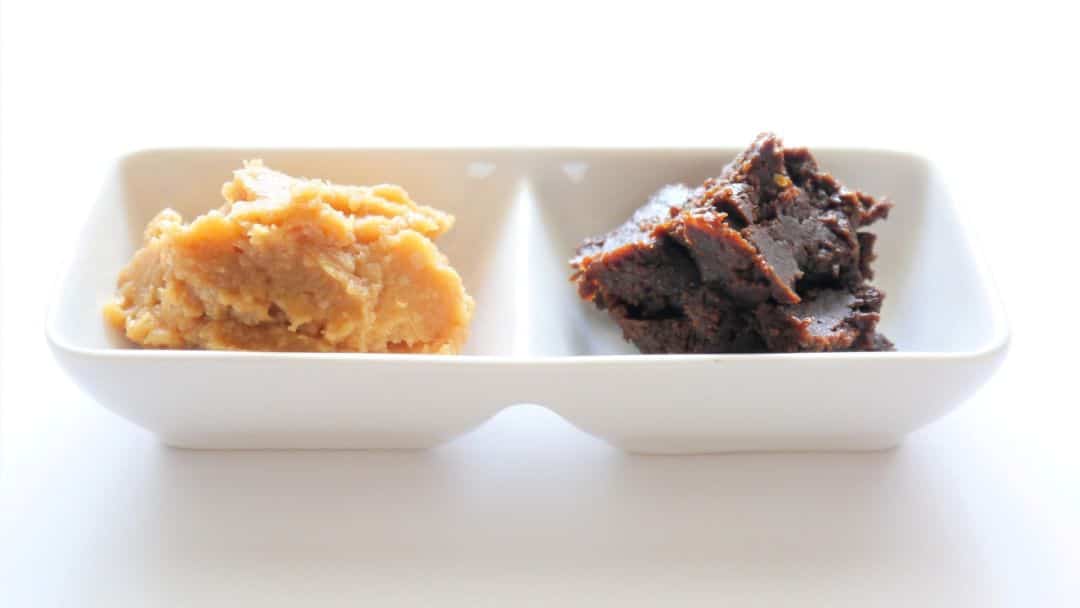
Miso is an excellent nutritional food. In Japan, it is said you need no doctor when you eat miso.
It has health-promoting nutrients such as linoleic acid, soybean lecithin, vitamin E, saponin.
- Lowers cholesterol
- Promotes anti-ageing
- Helps prevent stomach, liver and breast cancer
If you are Japanese, you drink miso soup every single day. Some drink at every meal. Traditionally, especially up until my grandparents’ generation, that was the norm. Miso soup accompanied every meal.
I also cannot think of my life without miso soup either. I absolutely love miso soup. I want to drink it as my last meal on the planet even!
Mirin

Mirin is made by carefully brewing glutinous rice and characterised by its elegant and mellow sweetness which you do not find in sugar. It is a type of rice wine similar to sake.
Mirin brings good sweetness to dishes. It also brings up the colours of the food as well as adding some glaze. It is rich in B Vitamins, and Japanese people even used to drink it as an energy drink in the past.
- Anti-ageing and beauty effect
- Improved metabolism and detox effect
- Lowers cholesterol
Dashi
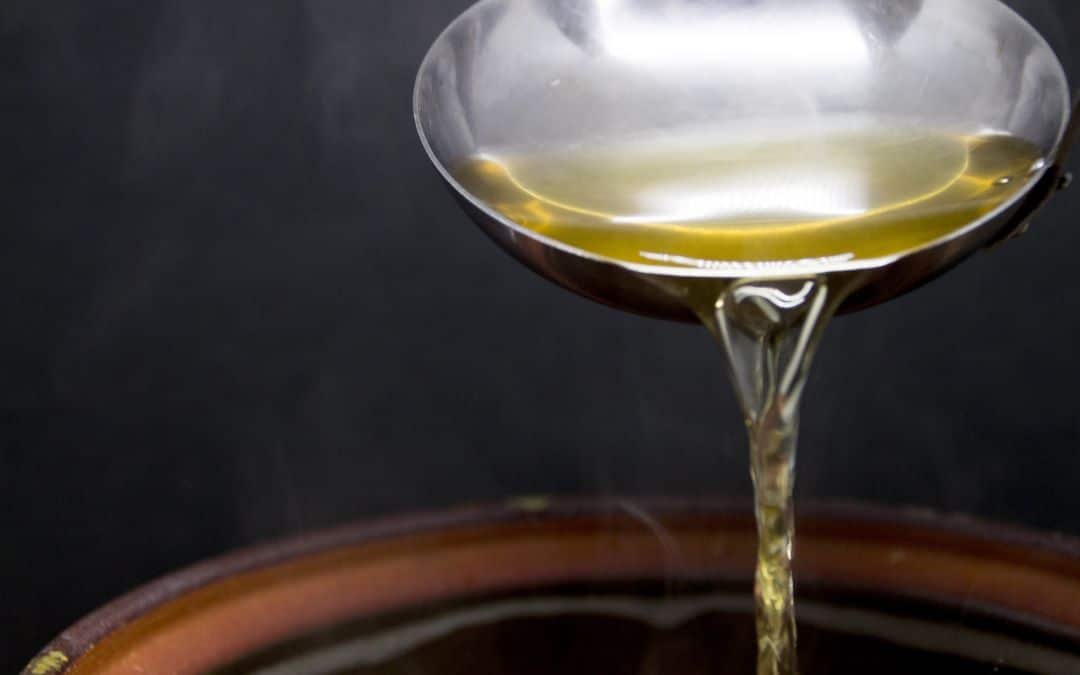
Dashi (出汁, だし) is a fish stock used in most Japanese dishes.
Without dashi, no Japanese cuisine!
Dashi forms the base for miso soup, clear broth soup, noodle broth soup, and many simmering liquids to bring the very best out of ingredients.
It is also VERY rich in beauty nutrients with protein, minerals, vitamins, essential fatty acids, and Umami. (e.g. miso contains 6 times more calcium than milk)
- Helps to maintain the firmness of the skin.
- Helps recover from fatigue
- Improves blood flow.
- Suppress accumulation of fat
- Lowers blood sugar level
There are mainly 2 types of dashi.
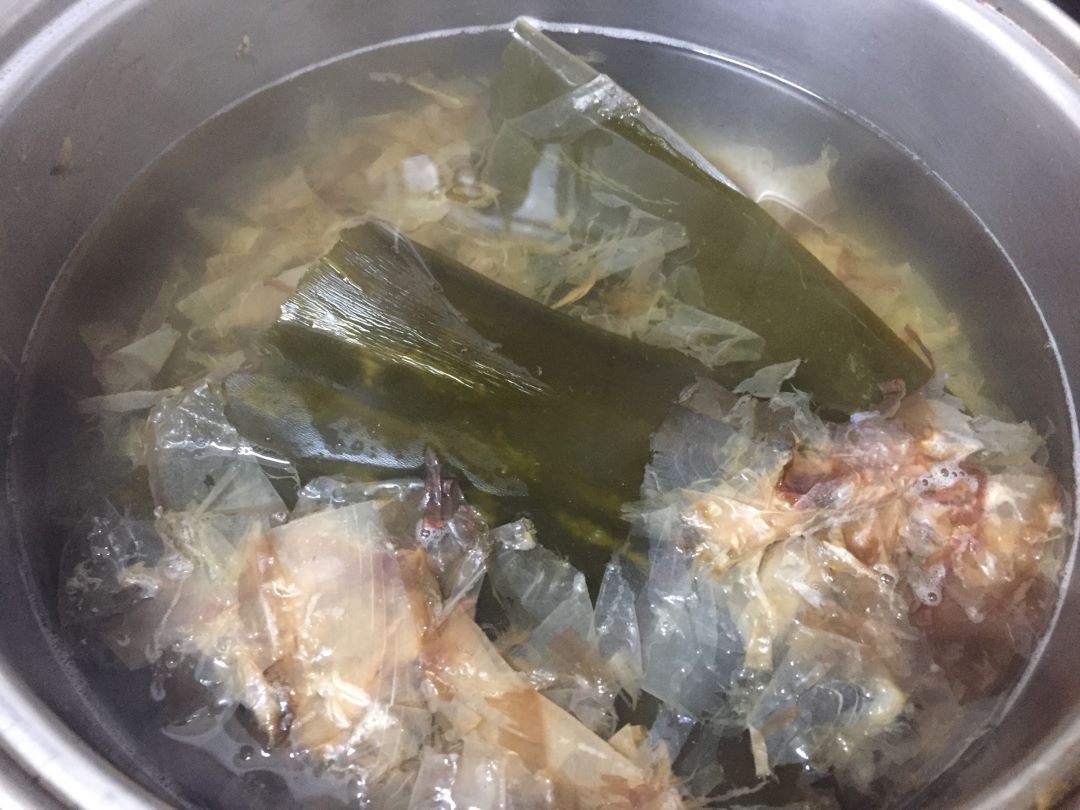
- Katsuo Dashi – bonito flake based
- Konbu Dashi – kelp-based
Sometimes we mix both to create a deep flavour too like the above picture.
Soy Sauce
You probably are familiar with this super seasoning you are using when eating sushi – soy sauce! It’s used in the Ramen soup too!
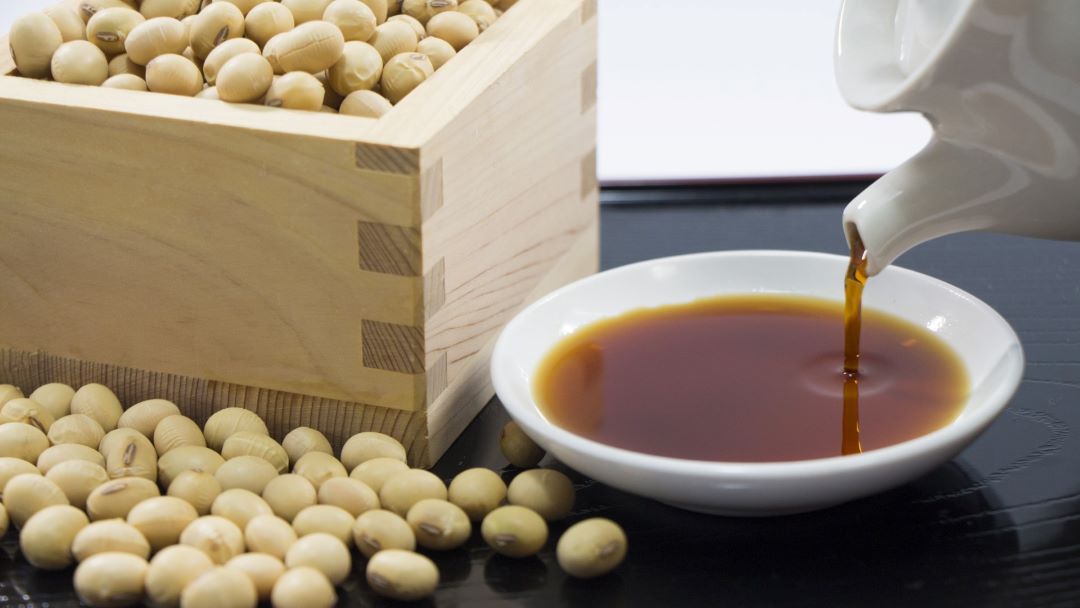
Japanese people have been using soy sauce for many centuries in their cooking, and the Japanese diet cannot be discussed without mentioning soy sauce.
Just like the other Japanese condiments, soy sauce has many beauty and anti-ageing benefits!
- Prevents cancer
- Relieves allergies
- Reduces high blood pressure
- Soothes and clears skin
- Prevents acne spots and freckles
- Promotes weight loss
It takes 1 year of fermentation of soybeans and rice koji to make soy sauce, and that gives rise to those health-promoting nutrients such as furanone, melanoidin, pectin, nicotianamine, and B vitamins.
Sake
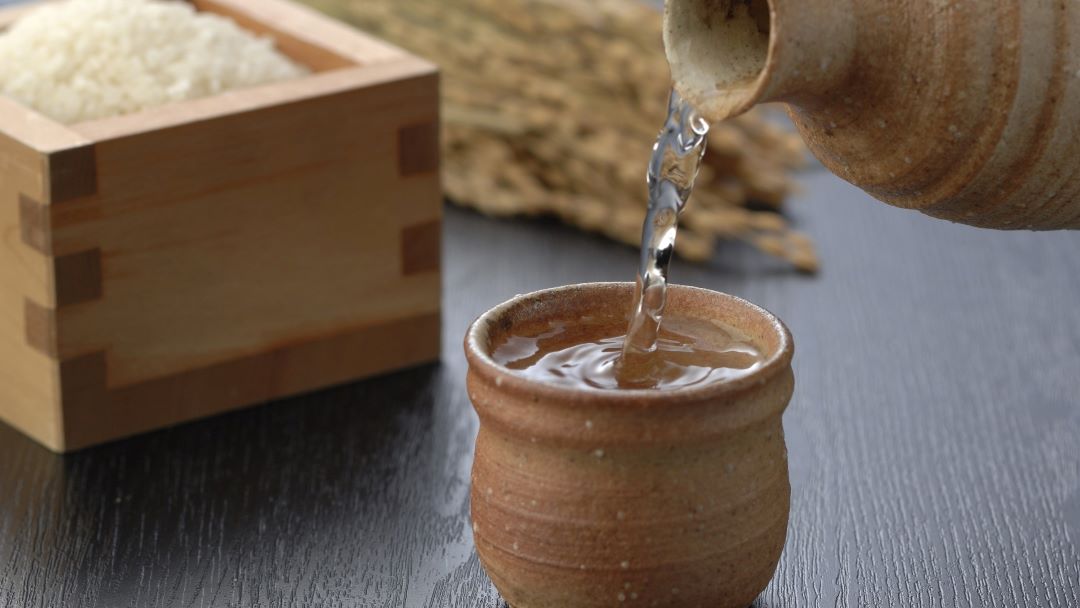
Last but not least, sake also plays a crucial role in Japanese cooking. You can feel the wisdom of the Japanese ancestors here.
- Removes the smell of fish, meat
- Softens the ingredients
- Lowers sourness
- Bring out the best taste in food
- Adds mellow sweet flavours and glaze
[Green Tea]
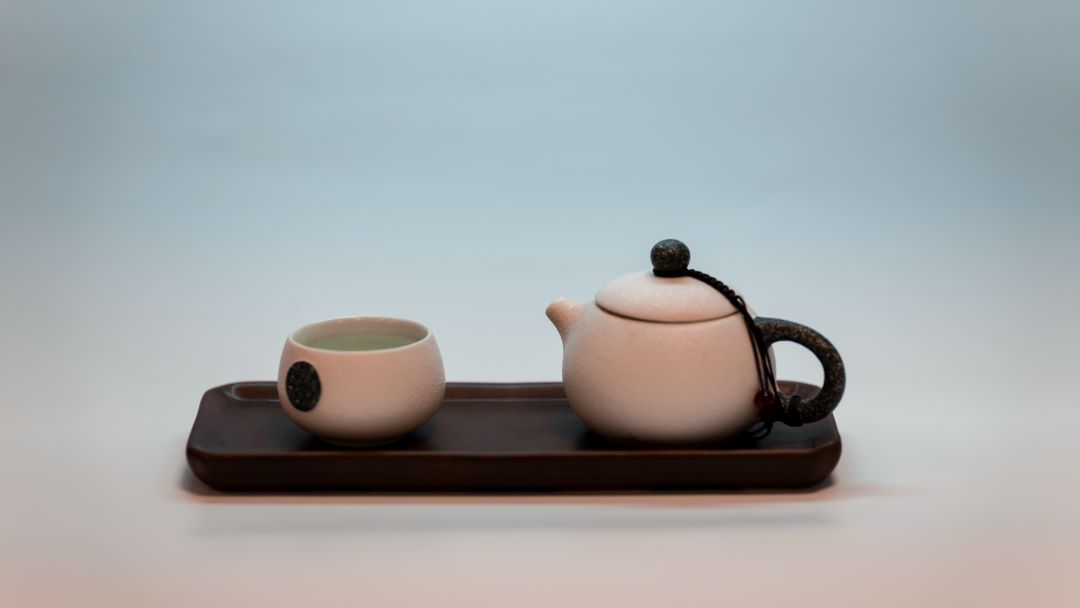
Green tea is literally everywhere in Japanese people’s lives. At home, at events, whatnot.
You would see how much Japanese people drink tea on a daily basis if you visited Japan. It is part of their DNA.
Green tea is one contributing factor to their long life as well as beautiful skin.
Some of the benefits are:
Anti-ageing
3 cups of green tea = 1 apple’s Vitamin C.
Yes 🙂 it is said that Vitamin C helps to prevent you from getting freckles or sunspots and acts as a sun protector. Vitamin C also supports the production of collagen too.
Green tea is also full of antioxidants (catechins) which prevents cell damage and studies show that catechins fight wrinkles too!
Weight loss
Antioxidants (catechins) in green tea can slow down the absorption of fat and sugar while digesting. Green tea contains a bit of caffeine which aids fat burning according to some studies.
Now, you have a rough idea of the typical ingredients and seasonings of the Japanese diet, it’s time to take a look at the eating habits of Japanese people.
It is deeply linked to the reason why the Japanese live long and stay youthful for long. I can personally attest to that after having lived in Europe and seen the difference over the past 15 years.
Let me explain!
The Japanese Food Culture – Way of Life
Eating is rather a ritual than a feast in Japan.
You take time to sit and savour the food. You also show respect and appreciation to all that nature gives you to live healthily and happily.
My mother started to teach me the principle of the Japanese diet, cooking method and table manners when I was very small (about age 5).
I naturally follow the same principle still to this day, and I do it without even thinking. It works wonders, and my weight has been the same over the past 23 years since the age of 15.
It is their mindset and attitude towards food that make a huge difference.
Make sure you master the below if you want to stay slim and look young!
[Balance & Variety]
When it comes to preparing food or even eating out, Japanese people think of how balanced the whole dish is.
If you look at Bento boxes, you can see how colourful and many small dishes included – this is a typical example of that. Below is a bento box a mother would prepare for her kids 🙂
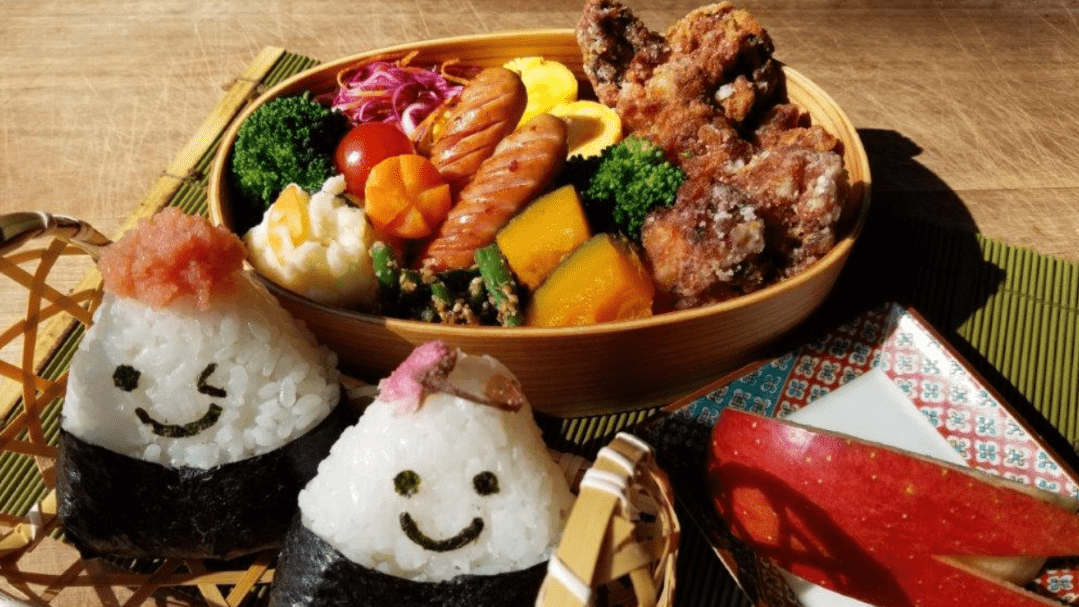 credit: http://hakubaconnect.com/cooking-class/
credit: http://hakubaconnect.com/cooking-class/
I remember making bento boxes with mom, and she always said make sure you have 5 colours and try to include at least 3 types of dishes together with rice.
Also, it is rare to eat the same dish(es) every single day. Having a variety of fresh foods and seasonal ingredients is very important for Japanese people. It derives from their inherent respect for nature that is indigenous to Japan.
[Fresh Ingredients]
For most Japanese people, it is natural to prepare and cook their meals every day. As mentioned, using fresh and seasonal ingredients are very important for them.
Most Japanese people have resistance to ready meals, canned products, or fast food.
It’s a little more westernised nowadays, but still many believe those things are not good for health and they tend to avoid it. They really crave fresh foods.
[Dessert is a Rare Occasion]
For most Japanese people, sweets are for special occasions.
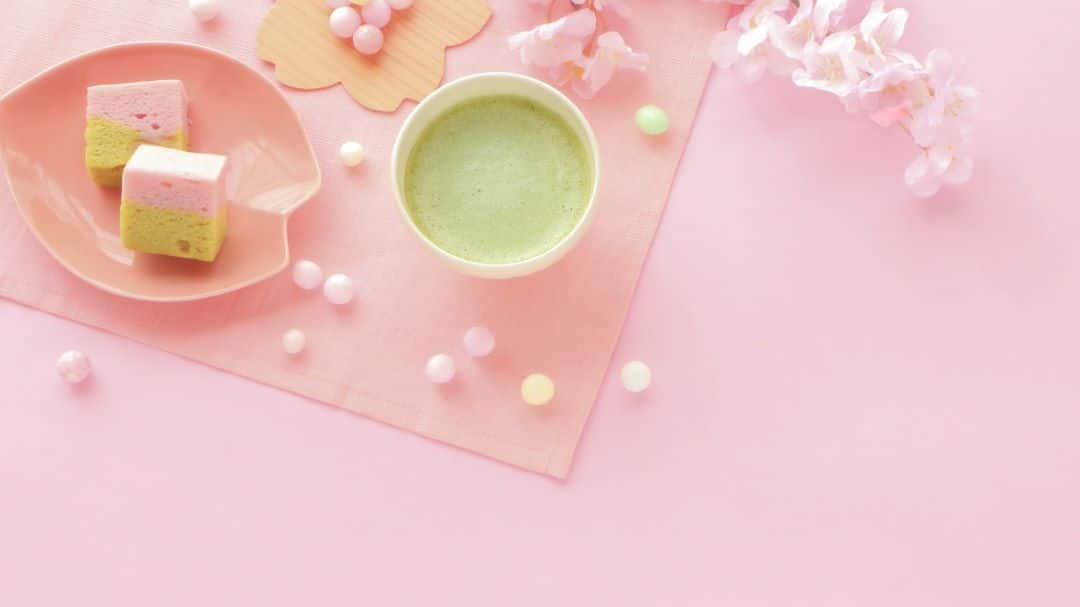
They don’t have the culture of finishing a meal with a dessert. It is a treat you get when you want to celebrate a special occasion.
Japanese desserts are also much low in fat, sugar and processed ingredients. They are in small portions too!
When I was little, my afternoon snack was rice crackers with small fish or shrimps. I really wanted to eat ice cream or cakes but was never allowed!
[Slow Eating – 80% full]
It is important to take the time to sit and eat every meal in Japan. Eating on the train, while walking or standing, is seen as a vulgar act.
Japanese kids learn to eat slowly and chew well in school and at home. In my case, for every mouthful, I was taught to chew a minimum 20 times.
When you chew well and take some time to eat, you get quite full without eating an excessive amount. You would need less food to feel satisfied and experience hunger between meals.
Japanese people aim 80% of fullness as a rule of thumb to avoid over-eating as it relates to all sorts of health issues.
Eat the Japanese Way To Stay Slim & Young

Now you know the typical Japanese diet and the eating habits that have long helped Japanese women stay slim and maintain a youthful look!
It is the ingredients, cooking methods, seasonings and eating habit.
Here are checkpoints and a couple of books and for you to help you get started:
[Foods to Eat MORE]
- Fish & seafood – look for seasonal fish
- Fibre-rich vegetables
- Soybean products – miso, tofu
- Rice
- Green tea
Miso soup is easier than ever! You can buy this (which you just have to pour hot water to make it). Easy 😉
I also recommend this box of green tea. Easy to drink!
[Food to Eat LESS]
- Bread, pasta
- Soft drinks
- Sweets, deserts
- Ready meals
- Red meat
[Cooking Methods to Do MORE]
- Steam, simmer, boil
- Use miso, mirin, dashi
[Cooking Methods to Do LESS]
- Frying with oil
- Adding sauces, cream, butter, sugar etc
[Habits to Introduce]
- Shop fresh and seasonal foods
- Prepare a variety of dishes in small portions
- Eat slowly (80% full)
- Drink a cup of green tea after a meal
[Recommended Books]
Japanese Cooking: A Simple Art by Shizuo Tsuji & Yoshiki Tshuji
Japanese Home Cooking: Simple Meals, Authentic Flavors by Sonoko Sakai
I hope this post is helpful and you are now inspired to give it a go with the Japanese diet! I know it’s a lot to take in and perhaps very foreign, so please feel free to contact me if you need any help 😉
Lastly, another reason why Japanese women maintain a youthful look is their skincare routine and beauty rituals. I’ve been doing my Japanese beauty ritual myself for the past 25 years since the age of 13.
From now on, always be mindful of what you eat and take care of yourself from inside more – it will guarantee long term health as well as radiant skin.
Do it the Japanese way for your beautiful life ❤️

About the author
Nana is a Japanese model-turned-entrepreneur and the founder of this blog. She was born and raised in Japan and currently lives in Switzerland. She started her skincare journey at the age of 13 when her mother introduced her ritual to her. Now 39, her love of skincare (Japanese way of course!) is bigger than ever before. She's here to share her decades of experience in the world of Japanese skincare to help all women from around the globe live happily with beautiful skin.

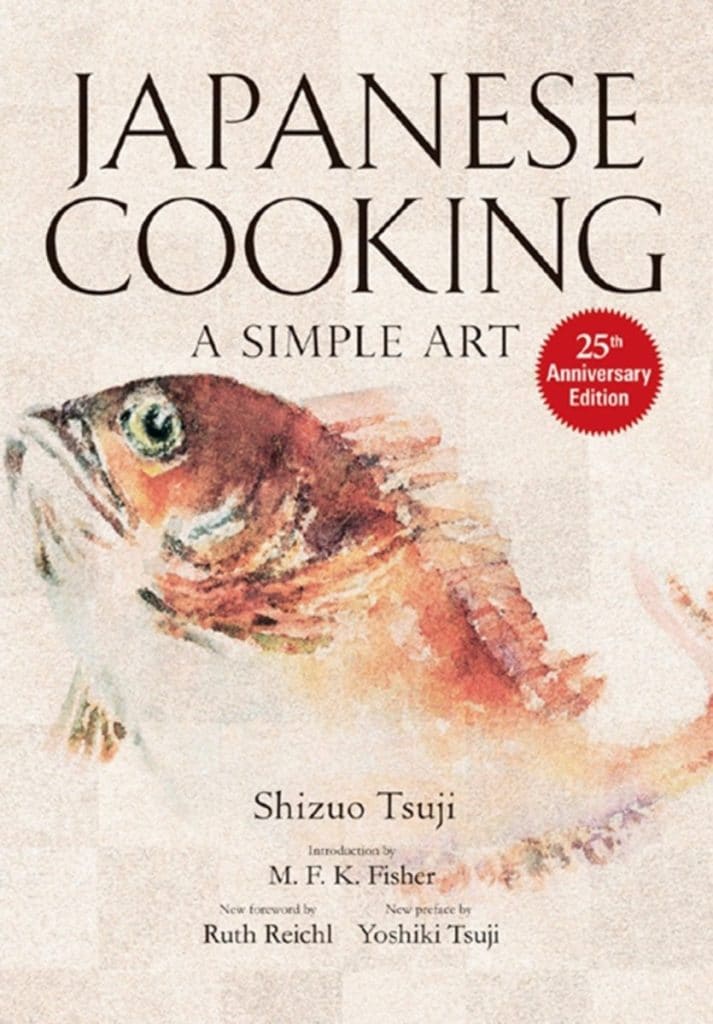
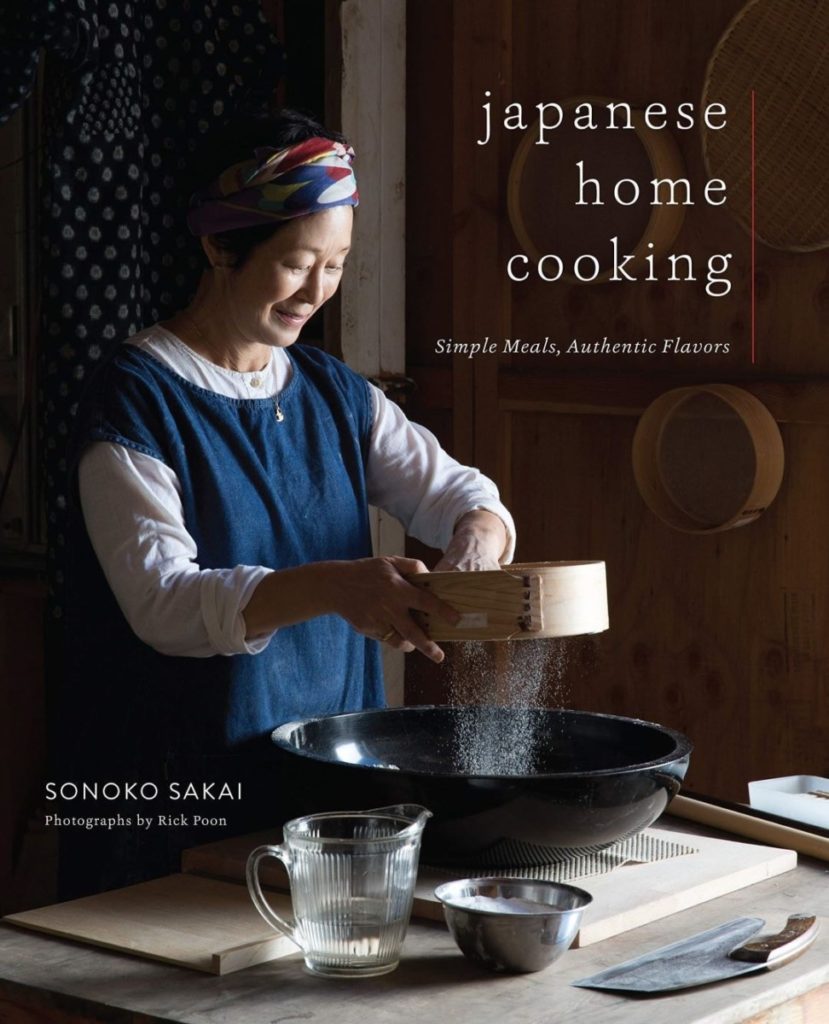



Thanks for the pleasant read! Ok break time is over and back to my homework.
I loved this blog 😉
Can I just say what a relief to find somebody who actually knows what he/she’s talking about on the internet. You definitely know – you’re Japanese so… 🙂 And, you definitely have the gift of writing also!
WOW just what I was looking for 😉
Loving this blog – you have done outstanding job on the content!
I really enjoyed reading this – cheers 🙂
I really enjoyed this post! Love your writing style – keep posting! True gem on J-Beauty from a Japanese girl 😉
Fantastic article 😀 A lot to think about!!
Hello There. I just found your blog! That is an extremely neatly written post – love it! Thank you for the post. I’ll certainly come back 😘